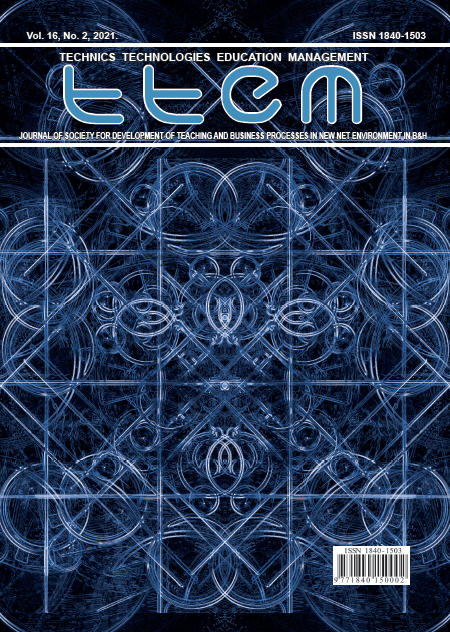The Genius Loci of Urban Settlements in the Ottoman Period of Bosnia and Herzegovina

Nadja Sabanovic1, Lana Kudumovic2, Ibrahim Numan2
1 Institute for construction of Canton Sarajevo, Sarajevo, Bosnia and Herzegovina,
2 Fatih Sultan Mehmet Vakif Univeristy, Istanbul, Turkey.
Abstract
_________________________
Abstract Urban settlements in Bosnia and Herzegovina started to emerge in their current form in the Ottoman period, which stretched from the fifteenth to the nineteenth century in Bosnia. In this period, new settlements in Bosnia and Herzegovina were developed according to principles that had already been widely applied in the Ottoman Empire, especially in the region of Central Anatolia. New social values were formed alongside processes of urbanization—these were the most significant changes that drove the development of Bosnia and Herzegovina from the Middle Ages onward. Such realities are conveyed in the unique genius loci of the settlements examined here. The aim of this paper is to define the essential spatial attributes of those settlements in Bosnia and Herzegovina that developed during the Ottoman period and their contribution to their “spirit of a place”. To achieve this goal, a range of spatial qualities have been extracted and examined. The discussion highlights how these spatial qualities contributed to the endurance of places with similar conceptual bases, keeping their distinctive spirit and authenticity.
Keywords: the spirit of a place, Ottoman culture in B&H, historic settlements, the built environment.
References
_________________________
1. Aru KA. TURK Hamamları Etudu, ITU-T.A.O, 1949.
2. Basagic SB, Redzepasic M S. Kratka uputa u prošlost Bosne i Hercegovine, Vlastita naknada, Sarajevo, 1900.
3. Ertem A. Osmanlıdan Günümüze Vakıflar , Vakıflar dergisi Aralık 2011.
4. Grabijan D. The Bosnian Oriental architecture in Sarajevo, Univerzum , Ljubljana, 1983.
5. Grabrijan D, Neidhardt J. Arhitektura Bosne i put u suvremeno / Architecture of Bosnia and the way modernity, Državna Založba Slovenije, Ljubljana, 1957.
6. Hadzijahic M, Traljic M, Sukic N. Islam i muslimani u Bosni I Hercegovini, (y.y), 1997.
7. Hrasnica M. Arhitekt Josip Prošpil Vancaš- Život i djelo, Biblioteka: Acta Architectonica et Urbanistica, AFS, Sarajevo, 2003.
8. Pulhan H, Numan I. The transitional space in the traditional urban settlement of Cyprus, Journal of Architectural and Planning Research, 2005; 22(2):160-178.
9. Jıve´ n G, Larkham PJ. Sense of Place, Authenticity and Character: A Commentary, Journal of Urban Design, 2003; 8(1):67–81.
10. Kudumovic L. Urban transformation and development of the urban fabric in the Balkans after Ottoman conquest, CIÉPO 22nd symposium,Uluslararası Osmanlı Öncesi ve Osmanlı Çalışmaları Komitesi Trabzon, 2018; I. Cilt, pp. 267-285.
11. Lynch K. The image of the city, The MIT Press, Cambridge Massachusetts, and London, England, 1960.
12. Norberg-Schulz C. Genius Loci: Towards a Phenomenology of Architecture, Edinburgh College of Art Library, Rizzoli, New York, 1979. 13. Spahic O. Towards Understanding Islamic Architecture, Islamic Research Institute, International Islamic University, Islamabad, Islamic Studies, 2008; 47(4).
14. Simsek O. Revitalising and rethinking courtyard housing in Sarajevo, Islah 2019 – 2nd International Conference on Islamic Architectural Heritage, FSMVÜ Yayınları, İstanbul, 2019.
15. Pasic A. Islamsko stambeno graditeljstvo, Institut za islamska istraživanja, Zagreb, 1991.
16. Petzet M. Genius loci-The Spirit of Monuments and Sites, Scientific Symposium, Quebec, (30 Septeber, 16th General Assembly of ICOMOS, 2008.
17. Sabanovic N. Bosna Hersek’te hamamlarüzerinden gelişen su kültürü ve yapıları, Fatih Sultan Mehmet Vakıf Üniversite – PhD Thesis, 2020.
18. Sehic Z, Tepic I. Povjesni Atlas Bosne i Hercegovine, Sejtarija, Sarajevo, 2002.
19. Vogler A, Vittori A. Genius Loci in the Space-Age, 1st Infra-Free Life Symposium Istanbul, December 11-15, 2006.
20. Yu-Chu Chen. A Preliminary Study Applying the Theory of Genius Loci on Tourism: A Case Study of Shiding Village, New Taipei City, Taiwan, 2014. Retrieved from: https://chungyuanchristianu.academia. edu/Departments/Interior_Design_Departmeny/ Documents
Corresponding Author:
Nadja Sabanovic,
Institute for construction of Canton Sarajevo,
Sarajevo,
Bosnia and Herzegovina,
E-mail: nadja.sabanovic@gmail.com
